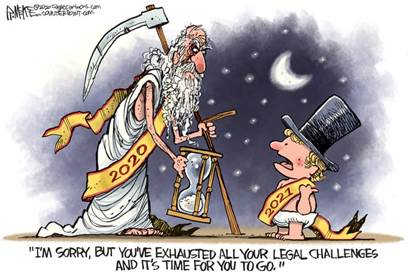
Yes, we are all ready for 2021. But I want to recognize two positive items that came in this last month of 2020. One, the Vaccines! Hallelujah. Two…
On December 16, Major League Baseball announced something that many of us already knew. The Negro Leagues played “major league” baseball. Specifically, MLB is recognizing that statistics from seven leagues known collectively as the Negro Leagues will become part of the MLB historical record.
The announcement made Bob Kendrick (below) a very busy man. As president of the Negro Leagues Baseball Museum, he fielded questions from all over the country. Podcasts, TV and all other forms of news media. While pleased with the announcement, he wanted everyone to know that this status had always been the case: “These men and women, from players to owners, didn’t need validation from anybody. For me, this move by baseball is more about righting a wrong.” Although long overdue, MLB’s action is a welcome addition to the year of the 100th anniversary of the founding of the first Negro League.
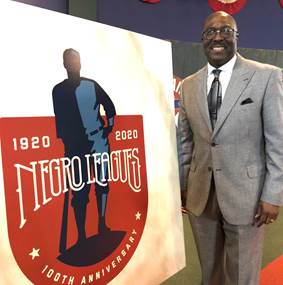
The sporting press universally voiced its approval with a blizzard of columns, tweets and blogs. In the Athletic, Joe Posnanski echoed Bob Kendrick. In Joe’s travels with Buck O’Neil, beautifully chronicled in The Soul of Baseball, he found that people walked up to Buck almost every day and said something like this: “I’m sorry that you never got to play in the Major Leagues.” And Buck would respond: “How do you know I didn’t.” Buck knew he had.
Now comes the next big step. Assembling the statistics. And making sure they are analyzed in context.
Negro Leagues Statistics – “Hidden Figures”: Fortunately, a band of researchers has been working on this for decades. But there is still a lot of work to do. Two months before the MLB announcement, this research was the subject of a segment on HBO’s Real Sports with Bryant Gumbel. It was titled “Hidden Figures,” a name cleverly borrowed from the title of the book and movie about the Black female mathematicians who worked at NASA on space missions.
As explained by Gumbel, “Historians and researchers say the history of the Negro Leagues is segregated from the official record of the game, just as Black players were segregated from the Major Leagues before Jackie Robinson.” The Real Sports segment was an investigation of “how MLB has failed to fully integrate the Negro Leagues into its history.” So the Gumbel piece turned out to be timely in light of the MLB announcement.
A good part of the segment was devoted to Larry Lester of Kansas City (video clip here). Larry is a Negro League author, researcher and historian, and he is one of the founders of the Negro Leagues Baseball Museum. He and others have worked for years uncovering box scores for Negro League games. The results are entered into a database maintained on the “Seamheads” website (click here).
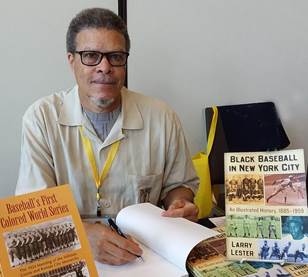
The task is not easy. Major newspapers rarely covered Negro League games. The researchers have gone into the archives of local Black newspapers (often not available online) and other sources (scorebooks, etc.) to uncover the info. The Seamheads database currently holds about 75% of the league games played. The search continues and will now have the support of MLB and its official statistician, Elias Sports Bureau.
The stats will need to be viewed in context. Negro League regular seasons were shorter than the AL and NL seasons. The balance of their games came from barnstorming to earn additional money and winter ball in Latin America where Black players were welcome. The only stats that will count as “major league” are the regular season games played from 1920 to 1948. This will mean that many numbers will be an undercount in any comparisons to the other leagues.
A good example is Josh Gibson, the legendary “Black Babe Ruth” of the Negro Leagues. Or as Black newspapers would say, Ruth was the “White Josh Gibson.” Gibson’s Hall of Fame plaque credits him with having hit nearly 800 home runs “in league and independent baseball.” But Gibson’s homer total for league play (as entered to date in Seamheads) is 194 – in 788 games. Hank Aaron hit his 755 in 3,290 games. Willie Mays hit 660 in 2,992 games. Gibson likely played at least 3,000 games overall, and in that context, the 800 homers on his HOF plaque sounds reasonable.
Satchel Paige was already in the MLB record book. He played for owner Bill Veeck in two cities (Cleveland Indians and St. Louis Browns) from 1948 to 1953. He also had a 3-inning cameo with Charlie Finley’s Kansas City A’s in 1965. Satchel’s 18 seasons in the Negro Leagues will now be added to his totals, but they will not accurately reflect his dominance and fame. Not only are there missing box scores, but Satch was often loaned out by Monarchs’ owner J.L. Wilkinson for big paydays in exhibition games. Satch won no Cy Young Awards, and his recognized wins may not reach 200, but most baseball historians agree that Satchel Paige was at or near the top of any best pitcher list.
Below, Satchel Paige and Josh Gibson.

Conversely, stats based on percentages (like batting average, OPS and ERA) may favor Negro Leaguers playing a shorter official season. Josh Gibson is again a good example.
Who has the highest season batting average in the last 80 years? In 1941, Ted Williams of the Red Sox hit .406 in 143 games. In 1943, Josh Gibson of the Homestead Grays hit .466 in his 69 regular season games.
What would Williams think about being compared to Josh Gibson? I think he would approve. When Williams was inducted into the Hall of Fame in 1966, he used his induction speech to encourage the Hall of Fame to add Negro Leaguers. “I hope that someday, the names of Satchel Paige and Josh Gibson in some way could be added as a symbol of the great Negro League players that are not here only because they were not given a chance.” Williams had competed against Negro Leaguers in barnstorming tours and knew their talents. Compared to MLB acting in 2020, the Hall of Fame responded at lightning speed. Satchel Paige entered the Hall in 1971. Josh Gibson in 1972.
Who’s the best? Williams or Gibson? No way to really know. But they were both great. And now they are both part of a unified and richer history of baseball.
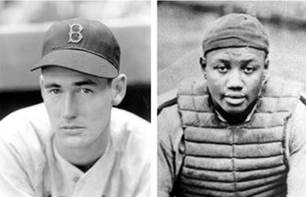
Updated Major League Trivia: Some well-known trivia answers will need to be modified. Here are four examples.
Opening Day No-Hitter: Bob Feller of the Cleveland Indians did it in 1940. He now has company. Leon Day pitched a no-hitter for the Newark Eagles on Opening Day in 1946.
Career Home Run Leaders: I have committed to memory three numbers on this subject: 755 (Hank Aaron), 714 (Babe Ruth) and 660 (Willie Mays). I know that Barry Bonds and Alex Rodriguez are in the record book, but I don’t know their steroid-enhanced numbers. Don’t care. Same deal on season homers – Roger Maris is still in first place in my world.
But for now, let’s focus on Willie’s 660. This past season, Albert Pujols passed Mays and now stands at 662 homers. But wait. Willie played for the Birmingham Black Barons in 1948 (photo below), and so under the new rules, any homers he hit that year will be added to his 660 National League homers. In a podcast last week, researcher Larry Lester said a new box score has been uncovered and adds a homer for Willie. It’s not yet entered in the Statheads database, but will soon be there and move Willie to 661. Will they find more 1948 box scores with Mays’ homers so he can retroactively pass Pujols? If so, since Pujols is still playing, there would then be a chance for him to twice pass Mays in career homers.
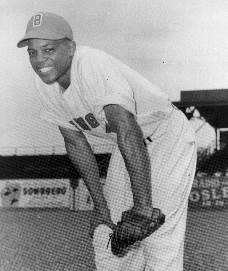
Hank Aaron played three months for the Indianapolis Clowns in 1952 before signing with the Braves. He hit five homers for the Clowns, but they will not be added to his 755. The cutoff for Negro League statistics being merged with MLB stats is 1948. The Negro Leagues operated for several years after 1948, but quality began to decline as MLB became more integrated. The statistics on the Seamheads database also use a cutoff date of 1948.
Night baseball: In some of his interviews last week, Bob Kendrick loved to tell this story. The traditional account has been that the first major league night game was played in Cincinnati in 1935. But that is not the case. Monarchs’ owner J.L. Wilkinson knew that games at night would draw better crowds during the work week. So he retained a company to construct a portable lighting system with telescoping light poles and a generator. He used the system for home games and was also able to load it up for games on the road.
Wilkinson’s system was first used in 1930. Below, a night game on August 2, 1930, at what was then called Muehlebach Field at 22nd and Brooklyn. The participants were the Monarchs and Homestead Grays. Catching for the Grays was a young Josh Gibson, in his first week in the Negro Leagues.
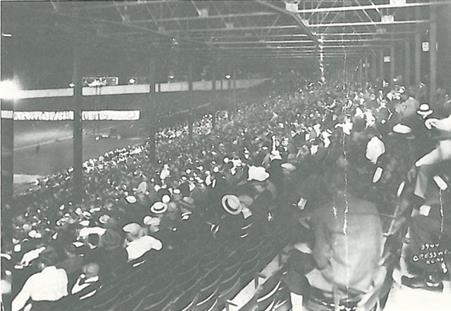
First Black Manager in the Major Leagues: I’m guessing eight men are tied for this – the managers for the eight teams of the first Negro League when it was founded in 1920 at the Paseo YMCA in Kansas City. Frank Robinson was the first Black manager in both the American League (Cleveland, 1975) and National League (San Francisco, 1980).
Missed Opportunity: After Ted Williams’ induction speech in 1966, MLB had a golden opportunity to embrace the Negro Leagues. In 1968, MLB formed a “Special Baseball Records Committee” to rule on a number of items related to historical baseball statistics. For example, the treatment of walks, errors and stolen bases had been calculated inconsistently over the years. Another item on the agenda was to determine which leagues and seasons would be considered “major league.” This is the list they came up with in 1969:
National League, 1876 to the present
American League, 1901 to present
American Association, 1882-91
Union Association, 1884
Players’ League, 1890
Federal League, 1914-15
Let that sink in. Three leagues from the 1800s, a time when baseball was a much different game. But no Negro Leagues, the original baseball home of the likes of Jackie Robinson, Larry Doby, Monte Irvin, Roy Campanella and Willie Mays.
In the recent MLB announcement adding the Negro Leagues, Commissioner Robert Manfred specifically stated that the omission of the Negro Leagues in 1969 was “clearly an error.” Left unremedied for 51 years. As Sam Cooke would say, it’s been a long time coming.
[Kansas City Trivia: When a Kansas City fan is asked about the first major league game in KC, the answer will likely be April 12, 1955, the day the Kansas City A’s first took the field. But that was not correct after the ruling of the MLB committee in 1969. The Kansas City Cowboys played one season (1888) in the American Association. The Kansas City Packers played in the Federal League in 1914 and 1915. The photo below is from opening day in 1914 when the Kansas City Packers played the Chicago Whales in the first game at the new Weeghman Park in Chicago. The Federal League folded after the 1915 season. Whales owner Charles Weeghman then bought a majority interest in the NL Chicago Cubs who moved their home games to Weeghman Park. The stadium is still there, but renamed after a later owner, William Wrigley.]

Special Meaning: How important will MLB’s action be for the estimated 3,400 Negro Leaguers who will now enter the MLB record books? Very few of the players are alive today. Some of them played only a brief time, maybe only a “cup of coffee,” baseball lingo for being in the big leagues only long enough to have a cup of coffee before being sent back to the minors. But I believe that this will register with the generations that follow. I offer two stories to support my position.
In the early days of Hot Stove, Mike Maloney let me know that his great-uncle had been a major leaguer. A catcher for the Red Sox back in the time of Babe Ruth. Held a record for errors. Said I could look it up. So I did.
According to Baseball Reference, Bill Moore was a catcher for the Boston Red Sox in 1926 and 1927. I checked some of the box scores in 1927, and Moore played in several games against the Yankees with Babe Ruth and Lou Gehrig in the lineup. This is the year Babe hit 60 homers. Digging into the record book, I found that Moore did indeed share the record for most errors by a catcher in a game (4). He played in only 49 games over two seasons almost a century ago. But his grand-nephew is still talking about it. And so is Hot Stove.
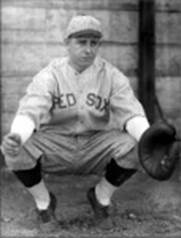
My law partner Jim Bird informed me that his wife Debbie’s grandfather, Roy Sanders, was in the big leagues. Debbie’s sister Suzanne, a high school classmate of Rita’s, showed us some old baseball photos of her grandfather. Jim also sent me a photo of a framed letter to Sanders from Connie Mack, the owner of the Philadelphia Athletics. Mack was offering a major-league tryout in 1914 to the Kansas City Blues pitcher.
Per Baseball Reference, Roy Sanders made it to the big leagues in 1917, pitching two games for the Cincinnati Reds. Also on the Reds roster was Olympian Jim Thorpe. The next year, he played for the Pittsburg Pirates, going 7-9, and leading the league with 14 complete games. Also on the Pirates roster was Casey Stengel, Roy Sanders’ friend from Kansas City. Sanders only had those two years in the majors, but he had a positive 0.7 WAR and a respectable career ERA of 2.75.
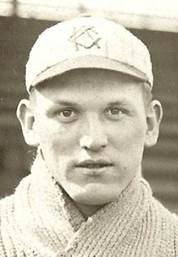
My favorite baseball movie, Bull Durham, has a great scene on the importance of getting to the big leagues (the “Show”), even for a short time. Crash Davis (Kevin Costner) tells his young minor league teammates that he has been to the Show. Crash was only in the Show for 21 days, but that’s enough for his teammates to be enthralled by his every word and to show him new respect (video here).
The Negro Leaguers played in the Show. It will be remembered and celebrated, just like it has been by the relatives of Bill Moore and Roy Sanders. Check out this early reaction from Sean Gibson (writing in The Undefeated):
“As the great-grandson of Josh Gibson, I can tell you that the reaction of the Gibson family was joyous. We thought Christmas had come early. And that feeling is shared by the families of other Negro Leaguers I know. We were gratified and felt that our fathers, uncles, grandfathers, and in my case, great-grandfather, were validated. Not that they were not already in our own eyes. But for those with little or no knowledge of the Negro Leagues and the era in which they took place, the story must be told.”
Cleveland Spiders Update: Although the team folded after the 1899 National League season, the Cleveland Spiders continue to make news. In July this year, the Cleveland Indians announced they were “reviewing” their team name. Two weeks ago, they made it official – the team will drop “Indians” after the 2021 season. No new name has yet been selected, but the online sports betting site SBD says that the odds favor “Spiders,” followed by “Cleveland Baseball Club,” “Guardians,” and “Wild Things” (from the baseball movie Major League).
Headlines are already being suggested for future Cleveland games. “Spiders Spin Web, Beat Twins 4-3.” “Spiders Bite Royals, 5-2.” “Spiders Ensnare White Sox in Three-Game Sweep.”
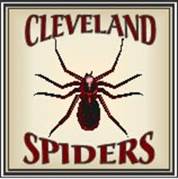
As noted in the last Hot Stove, the Spiders are also in a race with the Trump campaign. For the record on futility. The Spiders had the worst season in MLB history, finishing 20-134 (.130) in 1899. To date, the Trump/GOP lawyers have a won-loss record of 1-59 (.017). To paraphrase Paul Simon, there must be 59 (so far) ways to lose your recount.
In other numerology news:

Lonnie’s Jukebox (1) – Charlie Finley/Beatles Update: The Lonnie’s Jukebox section of the last Hot Stove featured Charlie Finley bringing the Beatles to Kansas City. Pat Titterington emailed me to ask why Rita’s ticket stub for that concert was not in the piece. He had seen that in a prior Hot Stove post. And he’s right. It should have been included. So I made an addition to the online version of the post, adding the following:
There was another special person in Municipal Stadium that night. I did not know her then. She was a 14-year-old freshman at St. Teresa’s Academy and attended the concert with her friend Anne Devaney. She still has her ticket stub. The $8.50 tickets were the highest priced that night – on the playing field in front of the stage.

Charlie Finley hoped that the young fans at the concert might also become baseball fans. He delivered that specific message on the back of each ticket, along with a photo showing him being fitted with a Beatles wig.
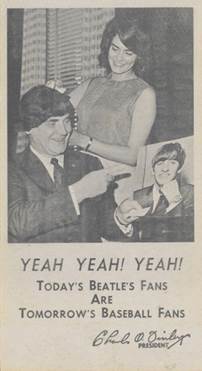
And it came true. Rita Leifhelm, then a screaming 14-year-old at Municipal Stadium, not only became an avid baseball fan, but today she edits a baseball newsletter. This one.
For your listening pleasure, here are two of Rita’s favorite songs from that night in 1964. “I Want To Hold Your Hand” and “Can’t Buy Me Love.”
Lonnie’s Jukebox (2) – Bruce Springsteen and Jon Bon Jovi: For their home state of New Jersey, the two rock ‘n’ rollers joined Jon Stewart on a pro-mask billboard.
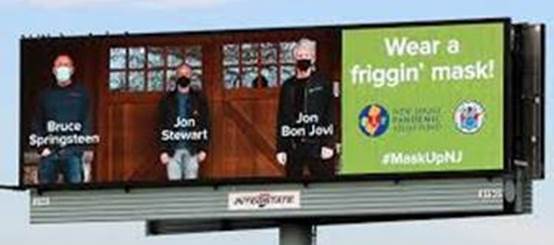
I planned to select a #1 song for each of them. That was easy for Bon Jovi, they had five to pick from. And then came a surprise, at least to me. Bruce has never had a #1 single. Sounds impossible, but neither did Fats Domino. The charts can’t always be right. But this one should work fine.
“Born to Run” by Bruce Springsteen (1984)
“Blaze of Glory” by Bon Jovi (1990)
Happy 2021!